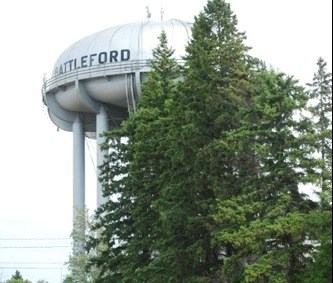The city of North Battleford is switching to an Automatic Metering Infrastructure system for water meters, and the next steps were outlined at Planning Committee Monday.
The city is planning to replace all 5,500 water meters in the city with the new system, which runs at a cost of $2.5 million spread over five years. The item was included in the 2020 budget.
The AMI system is designed to modernize meter reading, reduce the cost of reading the meters, improve customer service and alert customers of use concerns and possible leaks from constantly running water in toilets or sinks. The meters are also able to slow down or shut off water to a property without the use of field personnel.
The plan is to create efficiencies in the city’s waterworks and finance department and also save data for analysis.
According to Director of Utilities Stewart Schafer, the meters will send a signal to the tower, which then sends it to City Hall where it is picked up and entered into the database.
Monday, Schafer confirmed a request for proposal is now issued and scheduled to close Jan. 30. In the meantime, Schafer noted administration will be working on guidelines, policy and bylaws to implement the AMI.
The plan by administration, according to Schafer’s memo circulated at Planning Committee, is to develop an AMI bylaw to outline the steps for accessing changing water meters on properties. This would include what the city’s responsibilities are, the methods of communicating to property owners and what could happen if the property owner refuses access to the meter. It also covers charges to the property owner if access is delayed, and who is responsible for damages to property if the property has restricted access to those meters.
For instance, Schafer said, if the meter is placed behind a wall, “we’ve got to get access to it. Who is going to pay for us cutting the drywall or stud wall out so that we can get access to the water meter and change it out?”
The handling of lead water lines is also something to be considered. There are also additional items that administration must address.
One issue Schafer identified is that the meters will need to be changed out at a faster rate than the current meters. The other side effect of the change is that customers may notice a slight bump in water bills in the early going.
Most of the meters currently in use are old and aren’t reading correctly. Schafer said when the new meters are put in “they’re going to read properly again.” That is going to mean a bump in water bills estimated at three to five per cent.
Most residents should not notice much of a change but the ones who would feel the impact, Schafer noted, would be those heavy water users such as car washes and hotels.
The next step is for administration to bring forward a bylaw and policies at a future council meeting. It’s expected that will wait until after council decides on the request for proposals.



